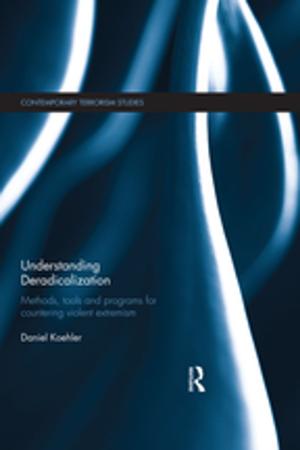Understanding and Reducing Persistent Poverty in Africa
Nonfiction, Social & Cultural Studies, Social Science, Demography, Business & Finance, Economics| Author: | ISBN: | 9781317997467 | |
| Publisher: | Taylor and Francis | Publication: | October 21, 2013 |
| Imprint: | Routledge | Language: | English |
| Author: | |
| ISBN: | 9781317997467 |
| Publisher: | Taylor and Francis |
| Publication: | October 21, 2013 |
| Imprint: | Routledge |
| Language: | English |
Prior work has shown that there is a significant amount of turnover amongst the African poor as households exit and enter poverty. Some of this mobility can be attributed to regular movement back and forth in response to exogenous variability in climate, prices, health, etc. ('churning'). Other crossings of the poverty line reflect permanent shifts in long-term well-being associated with gains or losses of productive assets or permanent changes in asset productivity due, for example, to adoption of improved technologies or access to new, higher-value markets. Distinguishing true structural mobility from simple churning is important because it clarifies the factors that facilitate such important structural change. Conversely, it also helps identify the constraints that may leave other households caught in a trap of persistent, structural poverty.
The papers in this book help to distinguish the types of poverty and to deepen understanding of the structural features and constraints that create poverty traps. Such an understanding allows communities, local governments and donors to take proactive, effective steps to combat persistent poverty in Africa.
This book was previously published as a special issue of the Journal of Development Studies.
Prior work has shown that there is a significant amount of turnover amongst the African poor as households exit and enter poverty. Some of this mobility can be attributed to regular movement back and forth in response to exogenous variability in climate, prices, health, etc. ('churning'). Other crossings of the poverty line reflect permanent shifts in long-term well-being associated with gains or losses of productive assets or permanent changes in asset productivity due, for example, to adoption of improved technologies or access to new, higher-value markets. Distinguishing true structural mobility from simple churning is important because it clarifies the factors that facilitate such important structural change. Conversely, it also helps identify the constraints that may leave other households caught in a trap of persistent, structural poverty.
The papers in this book help to distinguish the types of poverty and to deepen understanding of the structural features and constraints that create poverty traps. Such an understanding allows communities, local governments and donors to take proactive, effective steps to combat persistent poverty in Africa.
This book was previously published as a special issue of the Journal of Development Studies.















